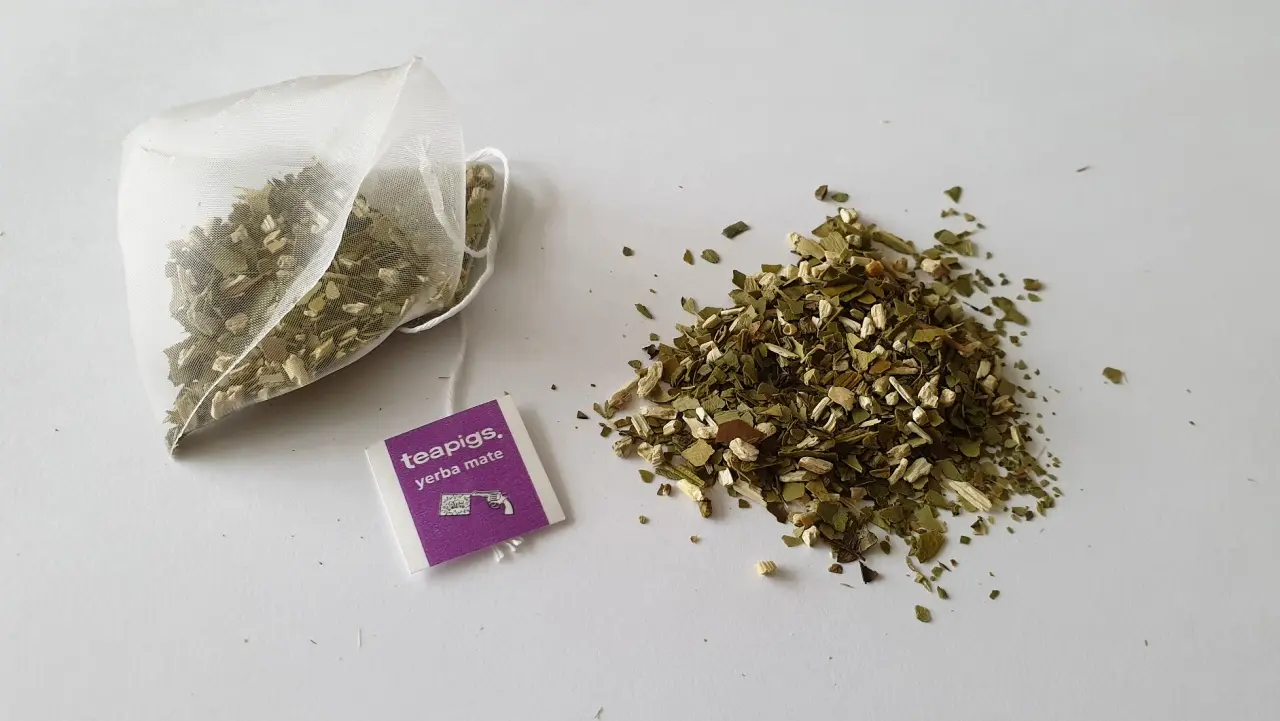Yerba Mate #
| Binomial / Botanical Name | Ilex Paraguariensis |
| Street Names | Yerba Mate; Yerba; Mate; Paraguayan Tea; Jesuits Tea |
| Major Active Compound | Caffeine; Theobromine; Theophyline |
| Indigenous Source | Paraguay; Argentina |
| Form | Shredded Leaves |
| RoA | Oral |
| Personal Rating On Shulgin Scale | +** |

SUBJECTIVE EXPERIENCE #
Originally popular in central and southern regions of South America, yerba mate is now found across the world, including within a variety of energy drinks. Whilst it has been on my radar for some years I have hesitated to engage largely on the basis of the following health warning, courtesy of Mayo Clinic:
“However, some studies indicate that people who drink large amounts of yerba mate over long periods may be at increased risk of some types of cancer, such as cancer of the mouth, throat and lungs. Drinking very hot yerba mate — 149 F (65 C) or hotter — is associated with a higher risk of cancer than is drinking yerba mate at cooler temperatures.”
On the other side of the coin, it is frequently claimed to have a number of health benefits, such as reduction of cholesterol, improved immune response and the aiding of digestion.
At time of writing there is a considerable amount of hype around the Internet promoting this tea, which tends to cite a range of such health benefits, as well as comparing it positively to coffee, typically claiming that it delivers the buzz without the jitters.
I acquired my yerba mate from the local supermarket, selecting a well known brand. I subsequently brewed my tea pig in boiling water for 3 minutes and then allowed it to cool (as per the health warning above).

Yerba Mate is sold along with regular tea in UK supermarkets
I began sipping the brew at 12 noon. It had a sort of tangy fresh edge to it, with a mild earthy back taste, not at all like regular tea. For context, at the start of the experiment I was a little weary, having had a short nap and a vegetarian brunch.
I did feel more of a sense of well-being after consumption, with less of a caffeine buzz than regular tea. For me, occasional claims that it is mildly psychedelic are rather strong. That well-being, however, could possibly be stretched to empathogenic, carried along with some mental clarity and the gentle stimulation. Its taste was decent, but given the citation above it’s only one for occasional use.
It was quite pleasant and refreshing in the circumstances, and it was something of a surprise that it did indeed have a distinct effect. This faded gradually during the afternoon.
Overall, if expectations are not set unreasonably high, this provides a positive experience, and is one which I may repeat given the correct circumstance in the future.